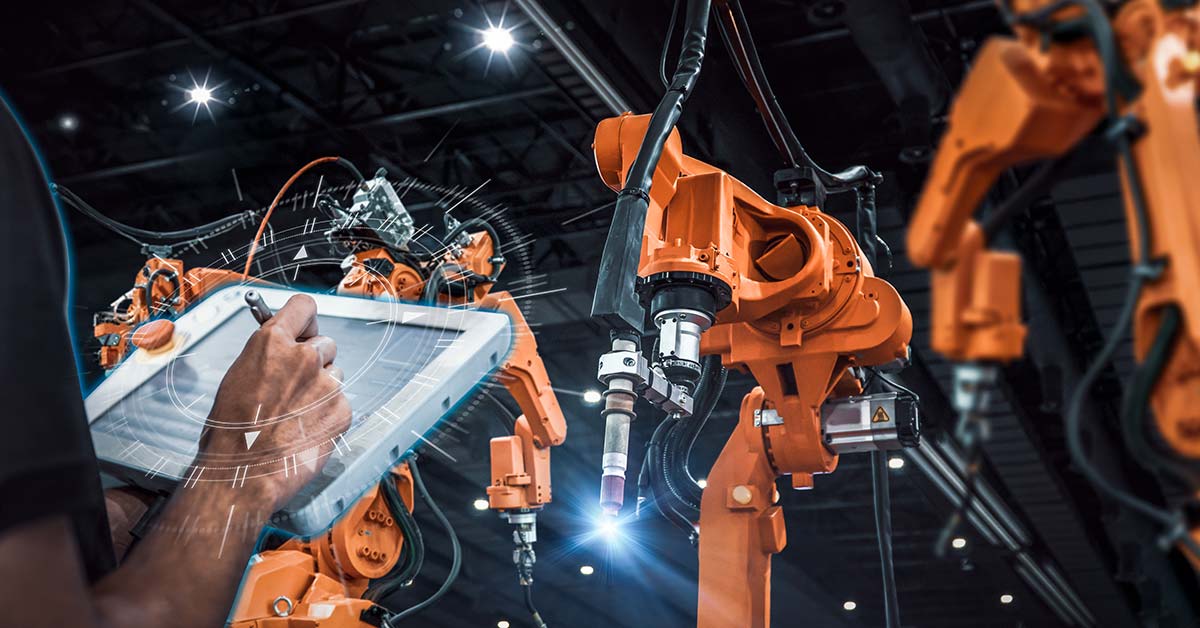Request a callback
When discussing the features of 5G private networks, talk naturally turns to the lightning-fast speeds and throughput rates. But in the context of true change it’s the low latency of 5G private networks that's key.
In a previous blog post I outlined the seven use cases of private networks in the large campus environment. Although not all of these use cases will rely on lower latency, the more change defining use cases will.
Jitter-free Augmented Reality reduces downtime
Virtual Reality and Augmented Reality (VR and AR) are poised to have a huge impact on Industry 4.0, and its applications are unlimited. Imagine a scenario at a manufacturing plant where a crucial part of machinery stops working. Typically, that would mean calling in the experts and waiting for them to arrive on site. But with a 5G private network AR can be used for instant diagnoses and fixes. Someone on site simply dons AR goggles and is guided through a fix remotely by an expert. In this same fashion, preventative maintenance can be performed, reducing the occurrences of breakdowns.
AR plays a role in compliance and safety in an industrial environment too – staff can be guided through special procedures, such as engaging and disengaging complex or dangerous machinery, by following the process delivered to them via AR glasses and checking off each step as they go. This is also really helpful when onboarding new staff.
But VR and AR aren't just limited to the manufacturing sector. In an agricultural environment crop or soil analysis can be conducted remotely using VR goggles or even drones. VR is all about video transmission; its effectiveness not only requires high definition and zero jitter, it also requires instant response or feedback. Any delay in the transmission could affect precise instructions, and in precision environments such as airplane manufacturing this could be catastrophic.
Highly responsive mobile robots adapt to changes
We can't talk about the future without mentioning robots. We're already seeing the impact mobile robots and Autonomous Guided Vehicles (AGV) are having on ports, airports and manufacturing campuses. They've increased efficiencies, enhanced safety and speeded up production. Robots are predictable and reliable; they take the same time to travel the same route every time and are 30% more effective in their use of space than a manual vehicle. Crucially though, and this is where the lower latency of 5G private networks comes in, they can re-route around obstacles or adapt to changes in layout in the blink of an eye and continue on to their destination. This reliability, predictability and mobility wouldn't be possible without the optimal coverage of a private network environment where 5G connectivity, unlike Wi-Fi, moves as seamlessly as the AGV itself.
Of course not all obstacles a mobile robot encounters will be an immovable object like a container. And that's why machine to machine communications is so important in a large campus environment. With so many AGVs travelling around the site they need to be able to see or predict each other, as well as other manually driven vehicles and of course humans. This instant communications is made possible by the lower latency available with a 5G private network and ensures that the mobile robots or AGVs have instant reactions to obstacles.
AGVs in action at car manufacturer
A good example of a typical use case in the automotive industry solves a very real problem right at the end of the manufacturing process. In this type of large campus finished cars are transported from the production line to a location where they wait to be loaded on to trucks. In most cases today a human would drive the finished cars to their pick-up site and wait for a shuttle bus to bring them back to the factory. There are time and cost implications with this model which the AGV could solve. These efficiency challenges are mitigated by the introduction of an AGV, which loads up finished cars, travels to the other end of the site and unloads the cars at their destination. This process is only made possible by a low latency connection which facilitates the AGV's ability to monitor hazards and respond instantly to any obstacles.
Low latency is arguably the big-ticket feature of 5G private networks. With a seamless handover between base stations enterprises can be confident of a reliably continuous high-speed connection that enables advanced technologies like VR and mobile robots.


